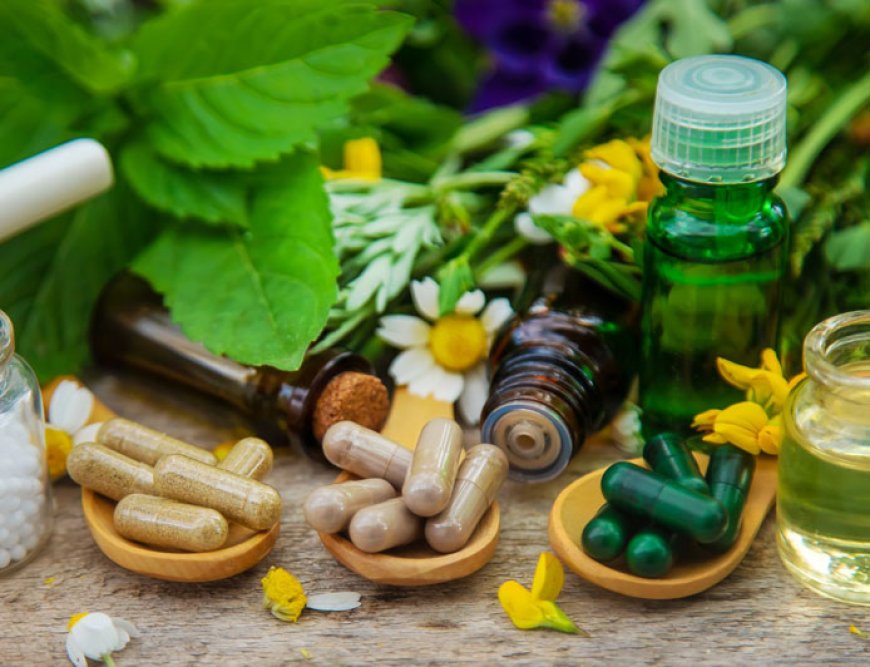Ayurvedic Manufacturing: Modern Techniques and Traditional Knowledge
Explore the world of Ayurvedic manufacturing as we delve into the merging of modern techniques and traditional knowledge, resulting in high-quality and effective products for health and wellness.

Ayurveda, an ancient system of medicine that has its roots in India, has been in practice for more than 5,000 years. This holistic approach to health and wellness emphasizes the use of natural herbs and ingredients to create remedies that promote overall wellbeing. Over the years, the manufacturing of Ayurvedic products has evolved, incorporating modern techniques and technology to improve product quality, safety, and effectiveness while preserving the traditional knowledge that underlies this ancient science.
The Evolution of Ayurvedic Manufacturing
The journey of Ayurvedic manufacturing has seen remarkable advancements in recent times. Initially, the Ayurvedic preparations were made in small-scale facilities or at home, and the distribution was mostly local. However, as the demand for Ayurvedic products grew globally, the need for a more standardized, controlled, and efficient manufacturing process became crucial.
Standardization and Quality Control in Ayurvedic Manufacturing
Standardization of Ayurvedic products is vital to ensure the quality, efficacy, and safety of the products. This has led to the development and implementation of Good Manufacturing Practices (GMP) in the Ayurvedic industry. GMP guidelines ensure that Ayurvedic products are consistently manufactured to the required quality standards.
Quality control (QC) is another critical aspect of modern Ayurvedic manufacturing. QC involves the testing and analysis of raw materials, in-process materials, and finished products to verify that they meet the predefined quality criteria. The testing methods employed include physicochemical analysis, microscopy, chromatographic techniques, and microbiological analysis.
Modern Manufacturing Techniques
Modern techniques have significantly improved the manufacturing of Ayurvedic products, making them more effective, safer, and more accessible to consumers worldwide. Some modern manufacturing techniques include:
a. Extraction Methods: Advanced extraction methods, such as supercritical fluid extraction (SFE) and cold-pressed extraction, have been employed in Ayurvedic manufacturing to obtain pure and concentrated extracts of herbs and other natural ingredients.
b. Nanotechnology: The use of nanotechnology in Ayurvedic manufacturing has revolutionized the delivery of Ayurvedic formulations. Nano-sized particles allow for better absorption, targeted delivery, and enhanced bioavailability of the active ingredients.
c. Encapsulation Techniques: Encapsulation technologies, such as liposomes, niosomes, and microspheres, have been utilized to protect and stabilize Ayurvedic formulations, enhancing their stability, bioavailability, and shelf-life.
d. Modern Processing Equipment: The adoption of modern processing equipment, such as mixers, granulators, tablet presses, and coating machines, has enabled the large-scale production of Ayurvedic formulations with improved efficiency, precision, and consistency.
Integration of Traditional Knowledge and Modern Techniques
While the incorporation of modern techniques has significantly enhanced the manufacturing process, the essence of Ayurveda remains rooted in traditional knowledge. The ancient texts of Ayurveda, such as the Charaka Samhita and Sushruta Samhita, still serve as the basis for Ayurvedic formulations and treatment protocols. Moreover, traditional techniques like Shodhana (purification), Bhavana (levigation), and Mardana (trituration) continue to play a crucial role in the manufacturing of Ayurvedic products.
Challenges and Future Directions
The Ayurvedic industry faces several challenges in striking a balance between traditional knowledge and modern techniques. These challenges include:
a. Standardization and quality control of raw materials
b. Preservation of traditional knowledge and practices
c. Adherence to regulatory requirements and GMP guidelines
d. Scientific validation of Ayurvedic formulations and therapies
e. Capacity building and training of skilled personnel
To overcome these challenges, continuous research and development efforts are necessary. The integration of modern techniques with traditional knowledge must be approached with care, ensuring that the essence of Ayurveda is not compromised. Moreover, collaboration between researchers, practitioners, and manufacturers is crucial to achieve the perfect synergy between tradition and technology.The Ayurvedic manufacturing industry has come a long way since its humble beginnings. The integration of modern techniques and traditional knowledge has enabled the production of high-quality, safe, and effective Ayurvedic products that cater to a growing global demand. By overcoming the challenges and fostering collaborative efforts, the Ayurvedic industry can continue to flourish, providing natural and holistic solutions for health and wellness in the modern world.

 vasundhara
vasundhara 





